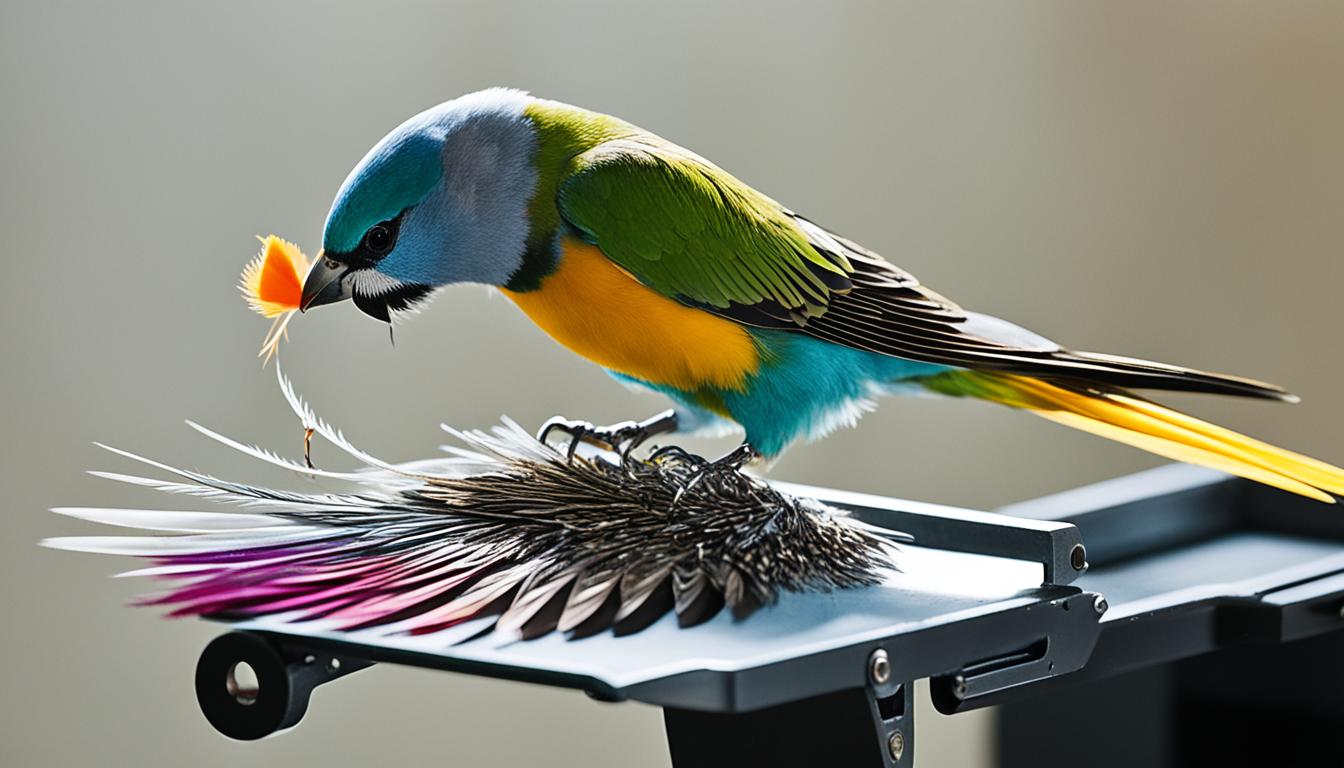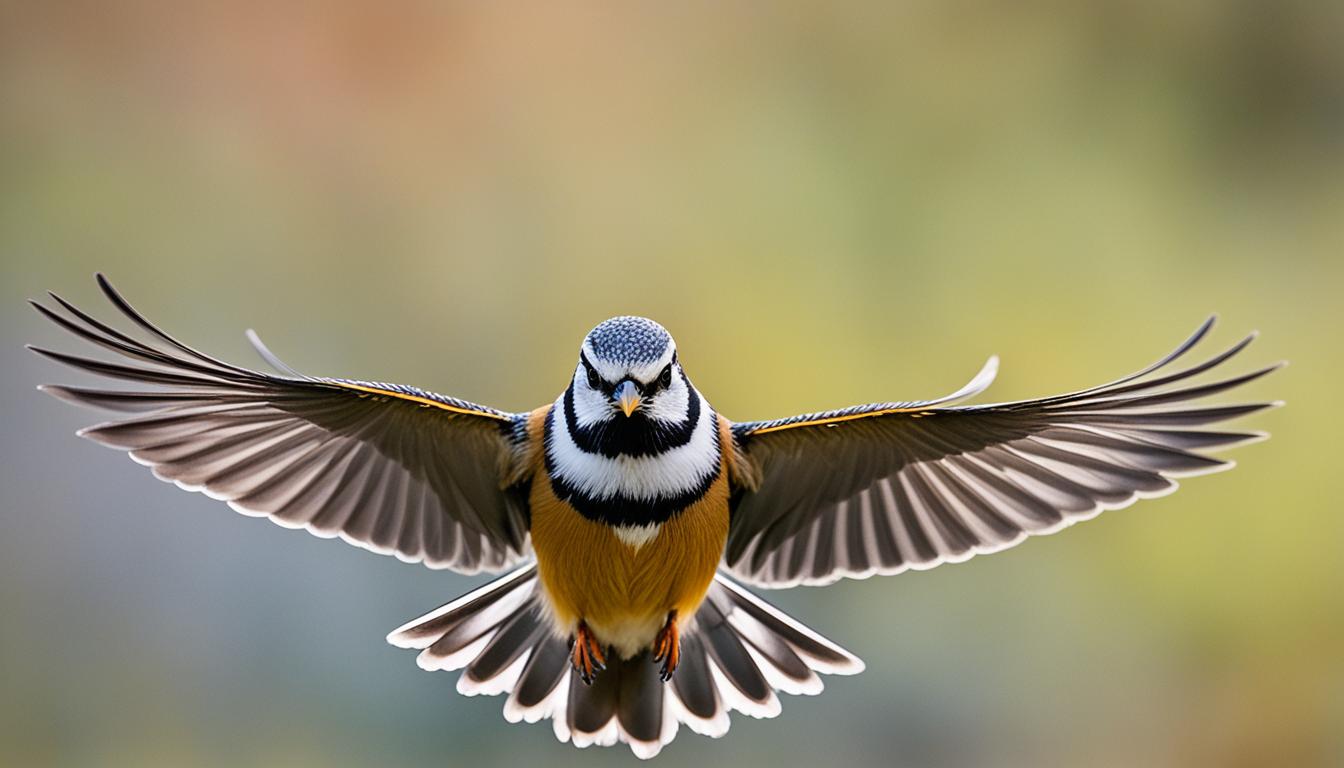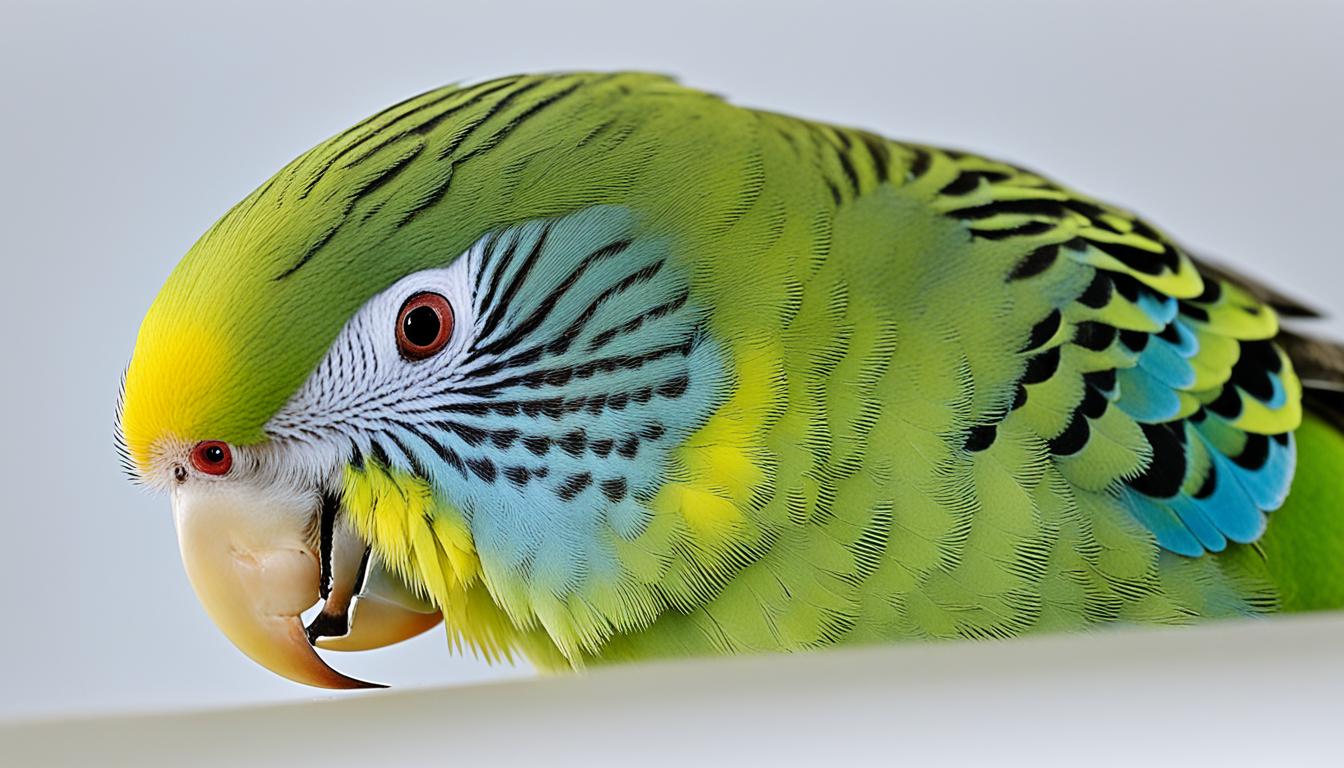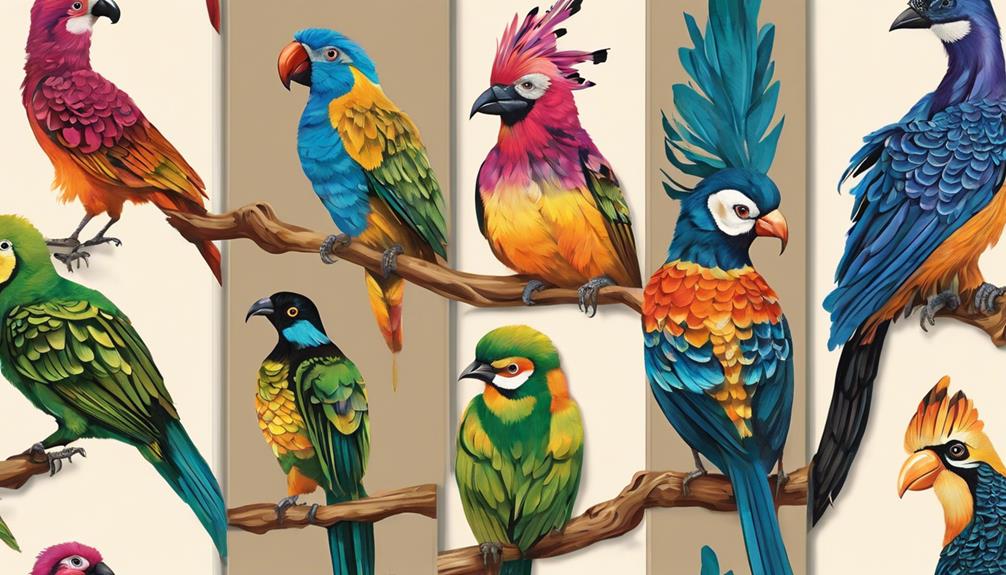Every year, thousands of pet birds suffer injuries from accidents that occur while they are flying freely within their homes. It is important to practice wing clipping to ensure the safety of your feathered friend and reduce the risk of accidents. However, it is crucial to approach wing clipping carefully and use safe techniques to avoid harming your pet bird.
Key Takeaways:
- Clipping wings is necessary to prevent accidents and injuries for pet birds in the home environment.
- Excessively short wing clips can lead to various problems and injuries in pet birds.
- Proper wing clipping should be done by an experienced avian veterinarian or technician using the correct technique.
- Flight is natural and beneficial for pet birds’ well-being, providing exercise and mental stimulation.
- Birds can be trained to navigate their surroundings and avoid hazards in the home.
The Importance of Wing Clipping for Pet Birds
Wing clipping serves several important purposes for pet birds, ensuring their safety and enhancing their relationship with their owners. By preventing free flight within the house, wing clipping helps minimize the risk of accidents and injuries. Fully flighted birds can unintentionally collide with windows, get too close to ceiling fans, or even land on hot surfaces, posing a danger to themselves. Clipping their wings reduces these risks, safeguarding their well-being.
Moreover, wing clipping plays a crucial role in training and taming pet birds. It establishes a hierarchy in the bird-owner relationship, allowing owners to assume the leadership position. This hierarchy is essential for the bird’s well-being and helps them understand boundaries and limits. Additionally, wing clipping prevents birds from escaping unintentionally through open doors or windows, reducing the risk of loss or injury.
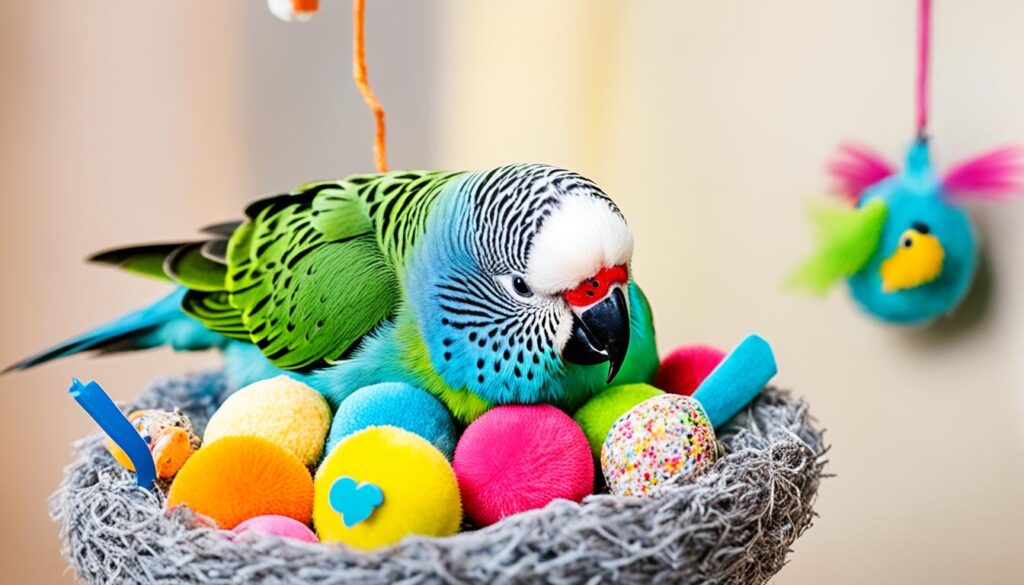
By clipping their wings responsibly, pet bird owners demonstrate their commitment to their pet’s safety and establish a harmonious environment in their homes. However, it is important to remember that wing clipping should be done with care and by following proper techniques to ensure the bird’s well-being. Understanding the importance of wing clipping and its benefits can help create a secure and nurturing environment for pet birds.
Dangers of Excessively Short Wing Clips
When it comes to wing clipping for pet birds, one common mistake that owners make is trimming the feathers excessively short. While the intention may be to limit the bird’s flight capabilities, excessively short wing clips can result in various problems and potential injuries.
Excessive falls and injuries: When birds have their feathers clipped too short, they may experience difficulty in maintaining balance during perching and flying attempts. This can lead to heavy falls, causing injuries to their fragile bodies.
Open wounds and wing tip injuries: With excessively short wing clips, the chest area of the bird becomes more vulnerable. The impact from falls or collisions can result in open wounds on the chest, which can be painful and require veterinary attention for proper healing. Additionally, the unprotected wing tips are more susceptible to damage, causing discomfort and potential complications for the bird.
Risk to growing blood feathers: Excessively short wing clips pose a risk to the bird’s growing blood feathers. These immature feathers have a blood supply that nourishes their development. If the feathers are cut too short, it can result in damage to the blood supply and hinder proper feather growth.
Feather chewing behaviors: Another consequence of excessively short wing clips is that birds may develop feather chewing behaviors. This can occur as a result of frustration or stress caused by the inability to fly properly. Feather chewing can lead to bald patches, feather destruction, and potential skin irritations.
To ensure the well-being and safety of pet birds, it is crucial to trim their wings correctly, avoiding excessively short clips. Proper wing clipping techniques should be followed to maintain a balance that allows controlled flight gliding while reducing the risk of accidents and injuries.
Expert Insight:
“Excessively short wing clips can have detrimental effects on the physical and psychological health of pet birds. It is important to strike a balance between flight restriction and allowing birds to maintain their natural behaviors.”
– Dr. Sarah Johnson, Avian Veterinarian
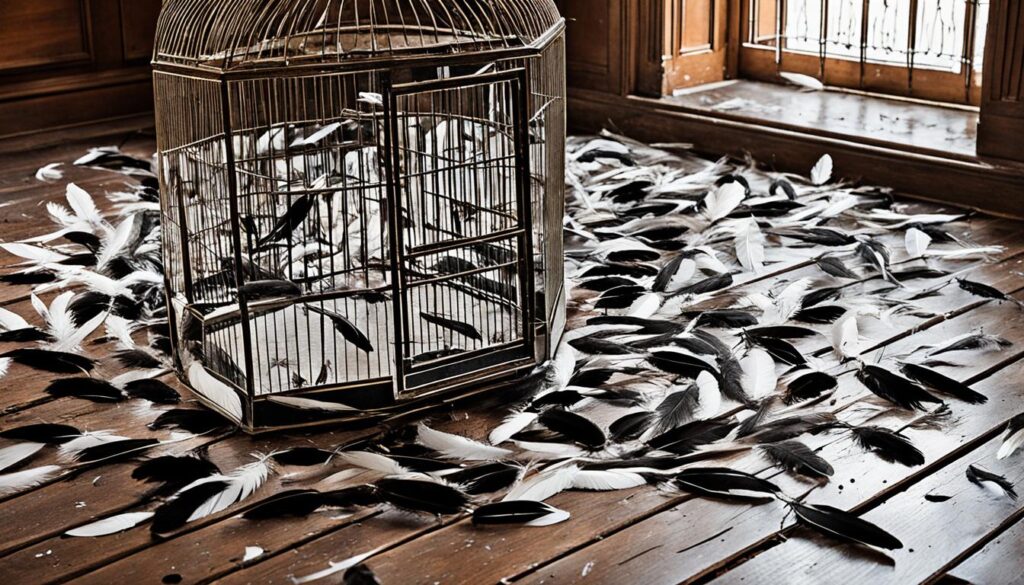
Comparison of Proper vs. Excessively Short Wing Clips
| Proper Wing Clip | Excessively Short Wing Clip | |
|---|---|---|
| Accident Risk | Reduced risk of falls and collisions | Increased risk of falls and accidents |
| Wound Potential | Minimal chest wounds | Open wounds on the chest |
| Wing Tips | Protected from injuries | Prone to damage and complications |
| Blood Feathers | Safe feather growth | Risk of damage to blood supply |
| Feather Chewing | Less likely to develop feather chewing behaviors | Increased likelihood of feather chewing behaviors |
By understanding the dangers of excessively short wing clips and ensuring proper trimming techniques, bird owners can promote the health and well-being of their pets, while still maintaining a safe home environment.
Proper Technique for Wing Clipping
When it comes to wing clipping for your pet bird, it’s crucial to follow the proper technique to ensure a stress-free experience for both you and your feathered friend. It’s always recommended to have the procedure done by an avian veterinarian or an experienced avian technician who understands the intricacies of wing clipping.
The correct technique involves trimming approximately a third to a half of the first seven primary flight feathers on each wing. This ensures that the bird can still glide downwards but prevents it from gaining height during flight. By maintaining this balance, you can provide your bird with a controlled level of mobility while reducing the risk of accidents.
One of the most important aspects of proper wing clipping is to cut one feather at a time. This careful approach helps prevent the accidental cutting of newly growing blood feathers, which can cause pain and lead to complications. Taking your time and being precise in each cut is essential to ensure the safety and comfort of your bird.
After the wing clip, it’s advisable to allow the bird a test flight in a safe, controlled environment to determine if the length of the clip is appropriate. This step helps you evaluate the bird’s flight capabilities and make any necessary adjustments. Remember that every bird is unique, and their flight requirements may vary, so it’s important to pay attention to their behavior and adjust the wing clip accordingly.
The proper technique for wing clipping not only ensures the safety of your pet bird but also promotes a stress-free experience. By having the procedure done by a professional and following these guidelines, you can help your bird maintain a balanced level of mobility while minimizing the risks associated with free flight in the home environment.
Remember, wing clipping is just one aspect of caring for your pet bird, and it’s essential to consider their overall well-being and provide a stimulating environment to promote their physical and mental health.
Key Takeaways:
- Wing clipping should be performed by an avian veterinarian or an experienced avian technician.
- Trim approximately a third to a half of the first seven primary flight feathers on each wing.
- Cut one feather at a time to avoid injuring newly growing blood feathers.
- Allow the bird a test flight to assess the length of the wing clip.
- Proper wing clipping promotes a stress-free experience and ensures the bird’s safety.
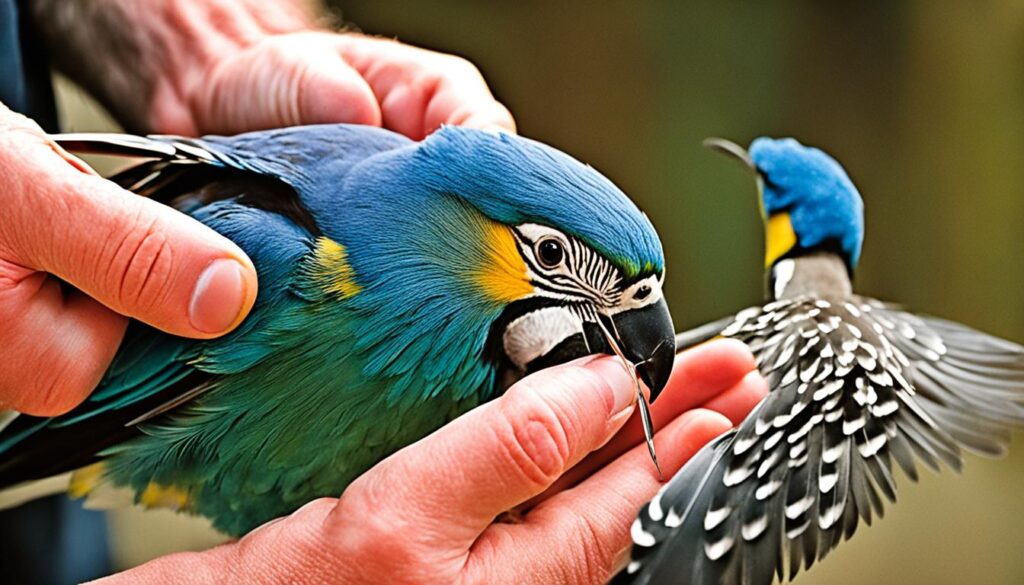
Benefits of Flight for Pet Birds
Flight is a natural behavior for birds and provides several benefits to their overall well-being. Letting your pet bird experience the freedom of flight can have a positive impact on their physical and mental health.
Exercise and Muscle Development
Flight allows birds to exercise their wing flapping muscles, promoting muscle development and strength. It helps to keep their bodies agile and in good physical condition. This is particularly important for young birds, as flight contributes to their proper growth and development.
Navigating the Environment
Flight provides birds with the ability to navigate their environment more effectively. They can explore and familiarize themselves with their surroundings, allowing them to find food, water, and shelter with ease. Flight also enables birds to escape potential dangers and seek refuge when necessary.
Maintaining a Healthy Weight
Flight helps birds maintain a healthy weight by allowing them to engage in natural physical activity. Flying requires energy and burns calories, preventing excessive weight gain and promoting a balanced metabolism.
Mental Stimulation
Flight stimulates birds mentally, providing them with necessary mental engagement and enrichment. As they fly, they encounter different sights, sounds, and situations, which help to keep their minds active and stimulated. Mental stimulation is essential for the overall well-being of pet birds as it prevents boredom and enhances their quality of life.

| Benefits of Flight for Pet Birds |
|---|
| Exercise and Muscle Development |
| Navigating the Environment |
| Maintaining a Healthy Weight |
| Mental Stimulation |
Teaching Birds to Navigate and Avoid Hazards
Bird owners can play an active role in teaching their feathered companions to navigate and avoid potential hazards in their home environment. By implementing proper training methods and gradually exposing birds to their surroundings, owners can help their avian friends develop essential navigation skills, ensuring their safety during flight.
One important aspect of teaching birds to avoid hazards is training them to recognize solid objects such as windows, glass doors, and mirrors. Birds can learn to perceive these surfaces as potential obstacles and avoid colliding with them. Gradual exposure to these objects, paired with positive reinforcement techniques, can help birds develop good navigation instincts and prevent accidents.
Additionally, owners can train their birds to respond to basic commands such as “come.” By teaching birds this command, they can be trained to return to their owners and avoid getting lost outside. This skill is especially crucial for outdoor aviaries or when birds are taken outside for supervised flight sessions.
Proper training and exposure to their surroundings enable birds to safely enjoy their flight capabilities while minimizing potential hazards in the home. By investing time and effort in teaching birds to navigate and avoid obstacles, owners can provide a stimulating and secure environment for their avian companions.
| Training Tips for Teaching Birds to Avoid Hazards |
|---|
| Introduce birds to the concept of solid objects by placing stickers or decals on windows and glass doors. These visual cues help birds differentiate between open space and potential obstacles. |
| Use positive reinforcement techniques, such as offering treats or praise, to reward birds for navigating around solid objects successfully. |
| Develop a command or signal, such as a distinct whistle or voice cue, to indicate potential hazards and redirect the bird’s flight path. |
| Gradually increase the bird’s exposure to different areas of the home, ensuring a controlled and safe environment for exploration and flight. |
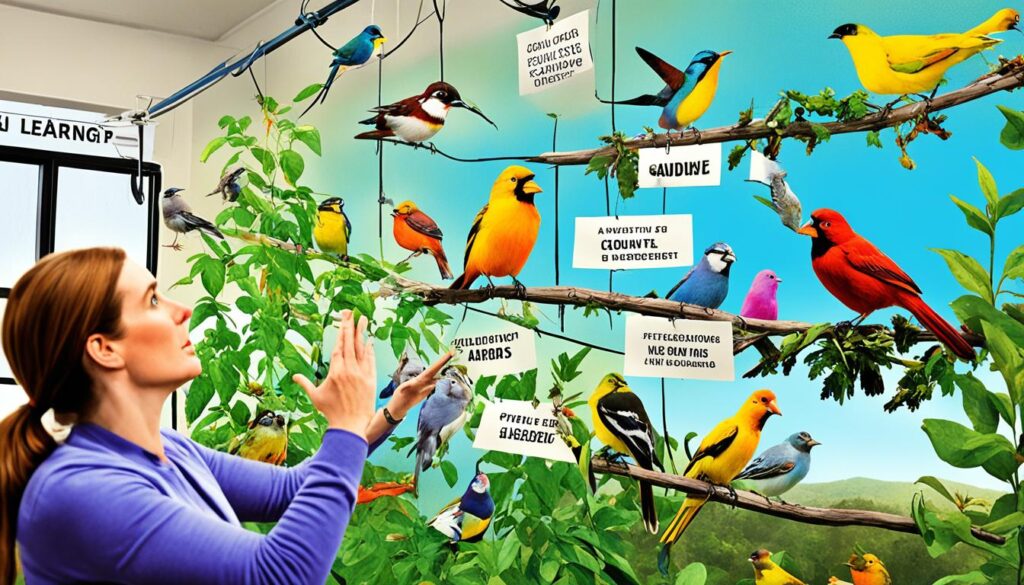
The Power of Consistency in Training
Consistency is key when teaching birds to navigate and avoid hazards. By establishing a routine and consistently reinforcing safe flight behavior, birds can internalize the training principles and apply them instinctively. Regular training sessions and ongoing positive reinforcement help solidify the bird’s understanding of navigating its environment safely.
Remember, each bird is unique, and the training process may vary. Patience, consistency, and a gentle approach are essential elements for successful training. Through thoughtful guidance and positive reinforcement, bird owners can empower their feathered companions to navigate their surroundings confidently while avoiding potential hazards.
Reducing Dangers in the Home
Creating a safe environment for flighted birds is crucial to their well-being and happiness. By taking a few simple steps, you can minimize the risks and protect your feathered friend from potential accidents. Here are some bird-proofing measures you can implement in your home:
Cover Windows and Mirrors
Windows and mirrors can be confusing to birds, leading to collisions as they attempt to fly through them. To prevent accidents, consider covering or partially covering these surfaces with curtains, blinds, or decals. This will help birds recognize the barrier and avoid collision.
Provide Window Perches
Birds love perching by windows to observe the outside world. To ensure their safety, install window perches where they can safely land and observe without being in harm’s way. Window perches provide a designated space for birds to enjoy the view while minimizing the risk of accidents.
Avoid Ceiling Fans and the Kitchen Stove
Ceiling fans pose a significant threat to flighted birds. Ensure that ceiling fans are turned off or inaccessible to birds while they are out and about. Additionally, keep birds away from the kitchen stove to prevent burns or other injuries.
Close Toilet Seats and Remove Open Water Sources
Toilet bowls and open water sources can be hazardous for birds. To prevent accidental drowning, keep toilet seats closed and remove open water containers within the bird’s reach. Always provide fresh, clean water in bird-specific containers.
Educate Family Members about Bird Safety
It’s important to educate everyone in your household about bird safety. Inform family members about potential dangers and teach them how to handle and interact with the bird safely. By raising awareness, you can ensure that everyone plays a role in creating a secure environment for the bird.
By implementing these simple bird-proofing measures and being mindful of potential hazards, you can make your home a safer place for flighted birds. Remember, prevention is key to reducing dangers and providing a secure and enriching environment for your beloved pet.
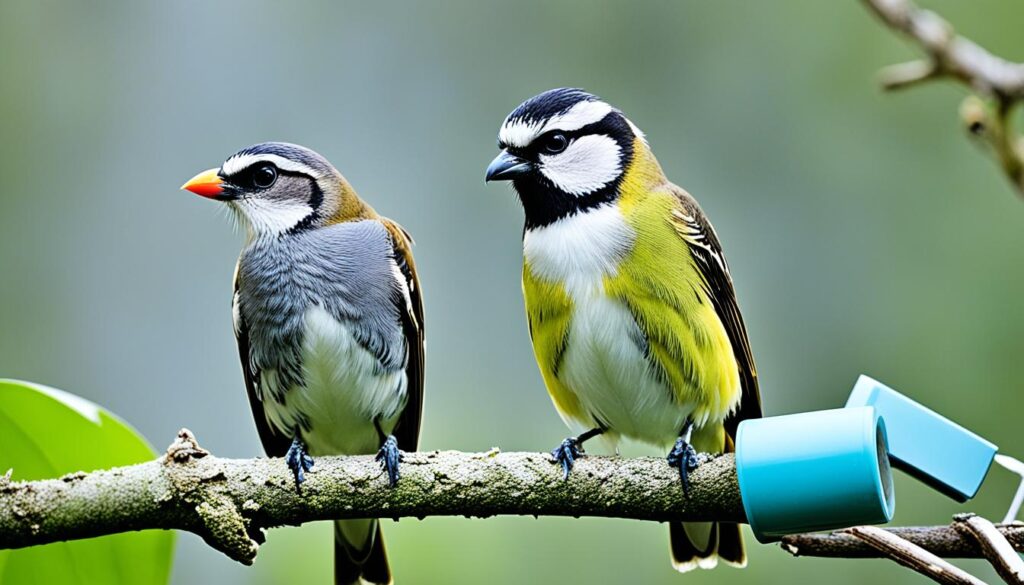
Addressing Concerns about Cats and Dogs
Many pet owners may have concerns about the interaction between flighted birds and cats or dogs. While it is commonly assumed that flighted birds are at a higher risk, both flighted and clipped birds can be in danger around these pets. It is important to understand the dynamics and behaviors of all pets in the household to ensure a harmonious environment.
Cats have a natural instinct to chase and catch small animals, including birds. It is crucial to supervise interactions between cats and birds at all times. Even flighted birds can be vulnerable if they find themselves on the ground or in a compromised position. Cats may try to paw at, pounce on, or chase birds, which can lead to physical harm or significant stress for the bird.
Dogs, on the other hand, vary in their reactions to birds. Some dogs may view birds as prey and exhibit predatory behavior, while others may be indifferent or curious. Regardless of their disposition, it is essential to have proper supervision and control when introducing dogs to flighted birds. Certain breeds with a strong prey drive, such as hunting dogs, may require extra caution and training to ensure the safety of the bird.
When introducing a bird to a home with cats or dogs, it is best to take a gradual approach. Start by creating a secure and separate space for the bird, such as a dedicated room or aviary, where it can be safely housed. This allows the bird to acclimate to the new environment without direct contact with the other pets.
“Properly introducing pets and birds is crucial for their safety and well-being. Supervision and controlled interactions are key to preventing any potential harm.”
As the bird becomes more comfortable, supervised interactions can be introduced. Use physical barriers, such as a cage or playpen, to keep the bird protected while allowing the pets to observe from a safe distance. Through positive reinforcement and gradual exposure, cats and dogs can learn to coexist peacefully with flighted birds. However, it is crucial to monitor their behaviors closely and be prepared to intervene if necessary.
Proper training for both pets and birds is essential to establish and maintain boundaries. Dogs should be trained to respond to commands such as “leave it” or “stay,” ensuring they do not chase or harass the bird. Teaching cats to ignore the bird can be more challenging, as their predatory instincts are deeply ingrained. Providing engaging toys, scratching posts, and interactive play sessions can help redirect their attention away from the bird.
Table: Tips for Introducing Birds to Cats and Dogs
| Tip | Description |
|---|---|
| 1 | Gradually introduce the pets to the bird’s presence, starting with supervised visual interactions. |
| 2 | Use physical barriers, such as cages or playpens, to provide a safe space for the bird. |
| 3 | Implement positive reinforcement techniques to encourage appropriate behaviors from both pets and bird. |
| 4 | Train dogs to respond to commands, such as “leave it” or “stay,” to prevent chasing or harassing the bird. |
| 5 | Engage cats with stimulating toys, scratching posts, and play sessions to redirect their attention. |
By taking these proactive measures, pet owners can create a harmonious living environment where flighted birds, cats, and dogs can coexist safely. It is important to prioritize the well-being and safety of all pets involved, ensuring that interactions are supervised and controlled at all times.
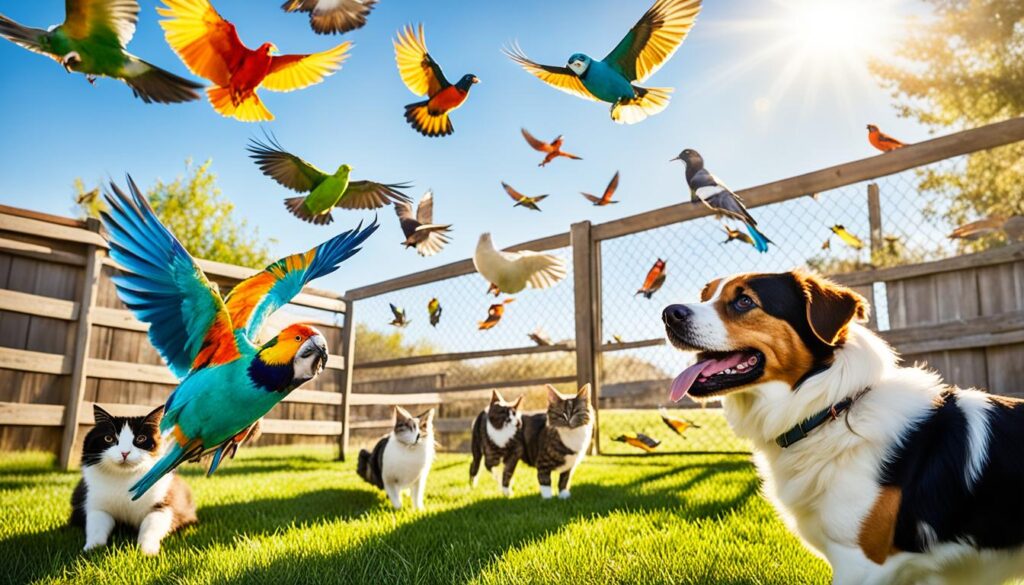
Conclusion
Clipping wings can be a safe and effective practice when done correctly, considering the well-being and safety of the bird. However, it is important to carefully consider the benefits of flight for pet birds and create an environment that minimizes potential hazards. By following safe practices for clipping wings and considering flight benefits, bird owners can ensure a stress-free and enjoyable experience for both the bird and themselves.
Creating a bird-friendly space in the home is crucial. Covering or partially covering windows and mirrors, providing perches for safe landings, and removing access to hazardous areas like ceiling fans and the kitchen stove can greatly reduce the risk of accidents. Bird-proofing the home and removing potential dangers such as open water sources and exposed toilet seats is also essential.
Establishing training and safety measures is equally important. Bird owners should work on teaching their birds to navigate and avoid hazards within the home. Positive reinforcement and gradual exposure can help birds develop good navigation skills. Training them to respond to basic commands like “come” can also prevent them from getting lost outside and ensure a safe return to their owners.
Lastly, considering the natural behaviors and needs of the bird is crucial in providing a suitable environment. Flight is a natural behavior for birds and offers numerous benefits to their well-being. While wing clipping may be necessary for their safety, it is important to find the right balance in wing length to allow gliding without gaining height. This allows the bird to maintain some level of flight while minimizing the risk of accidents.
